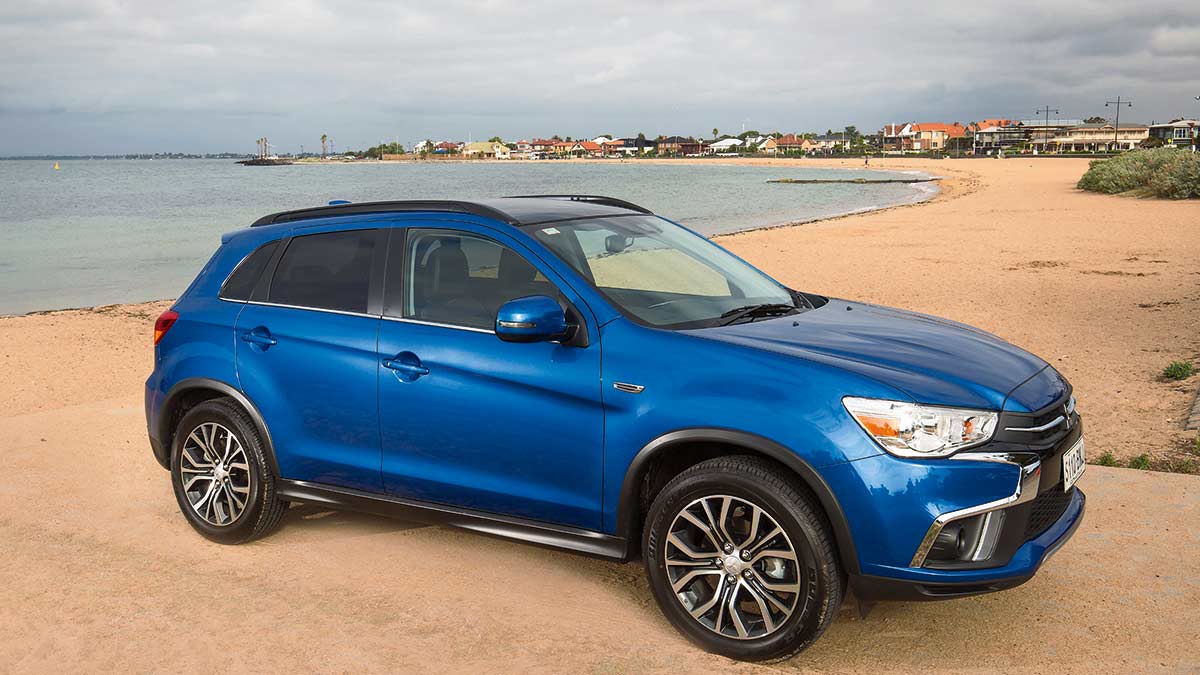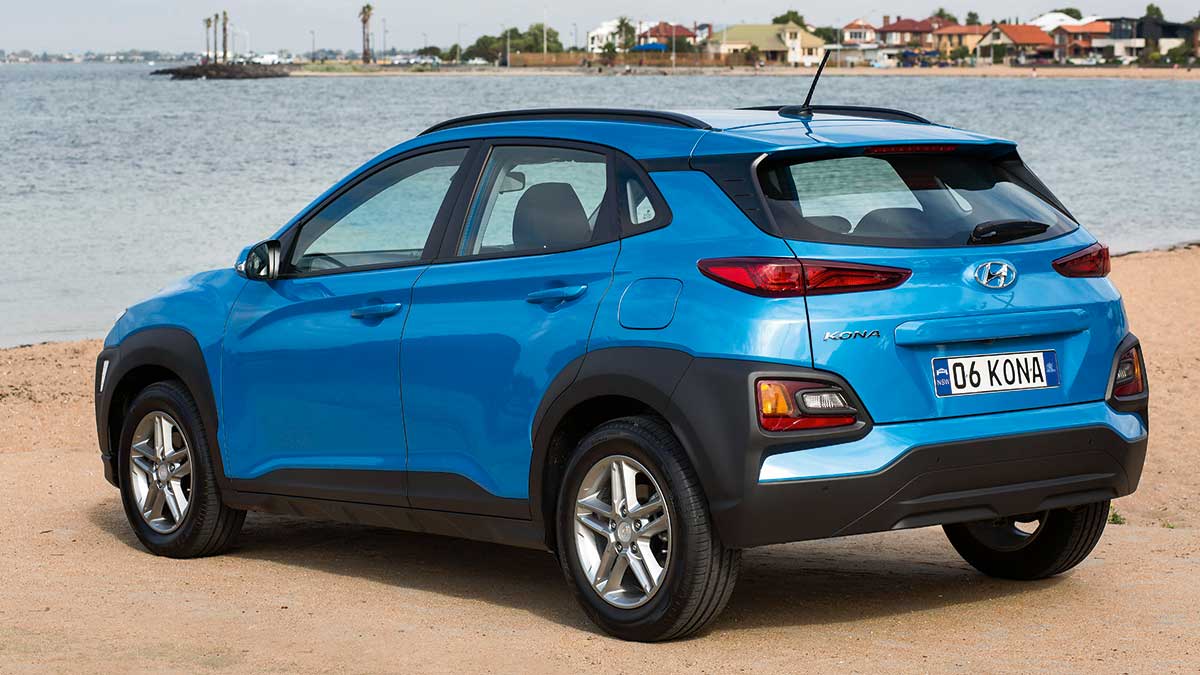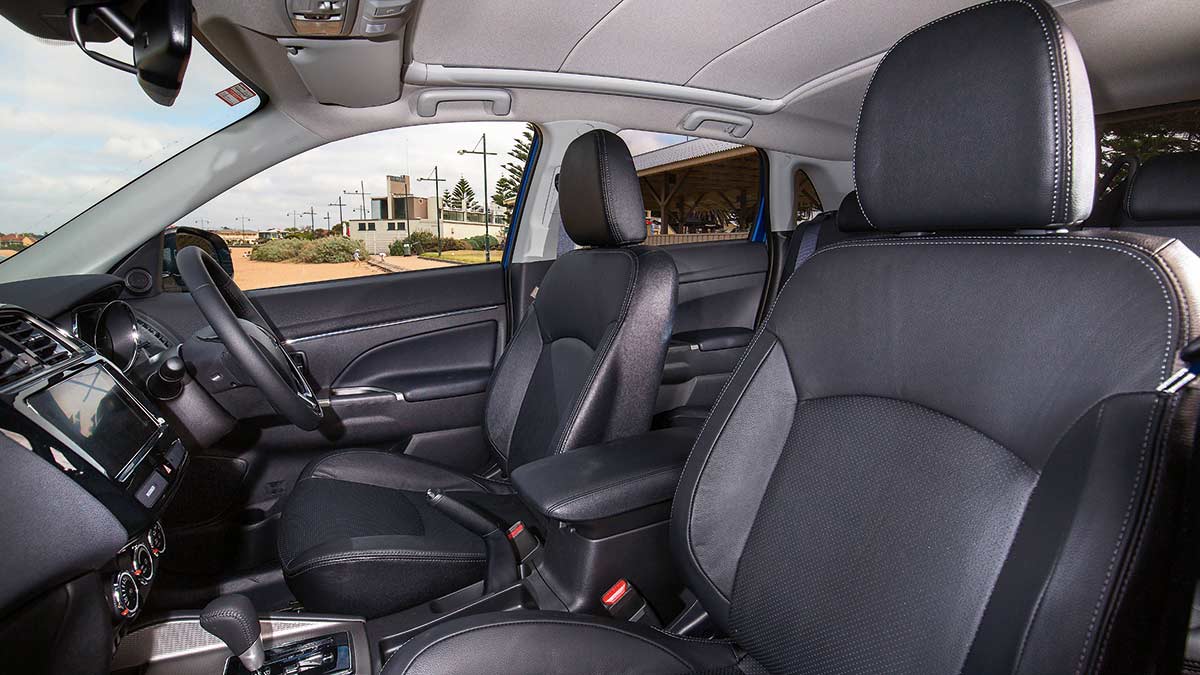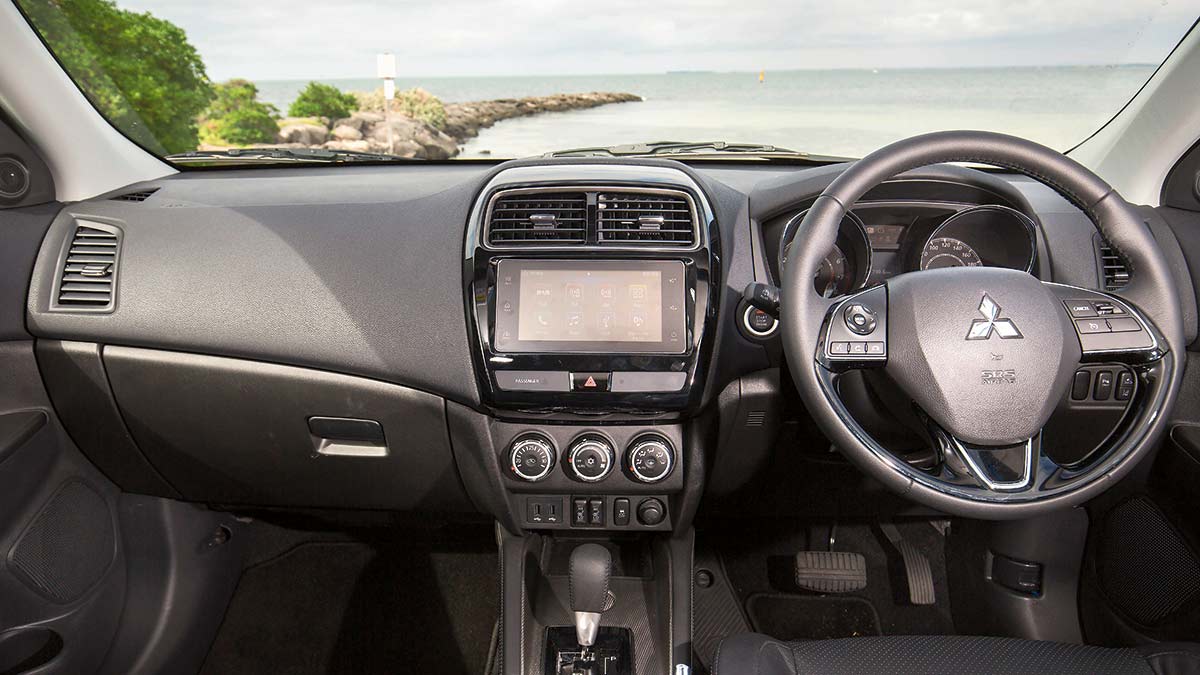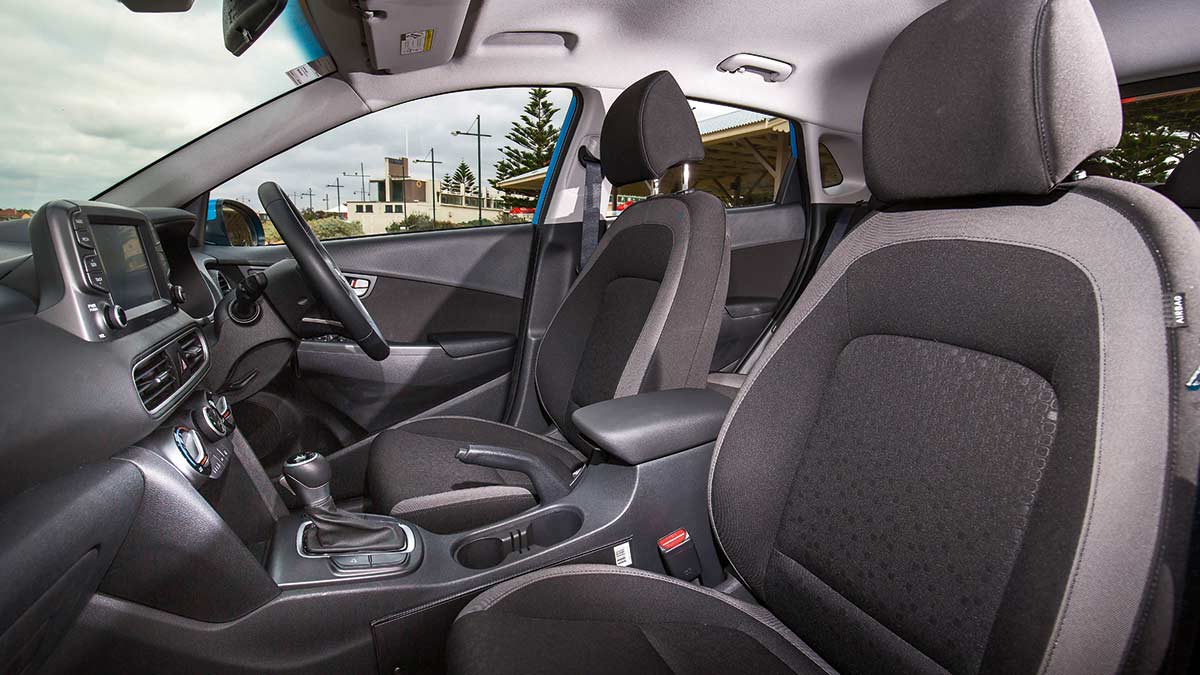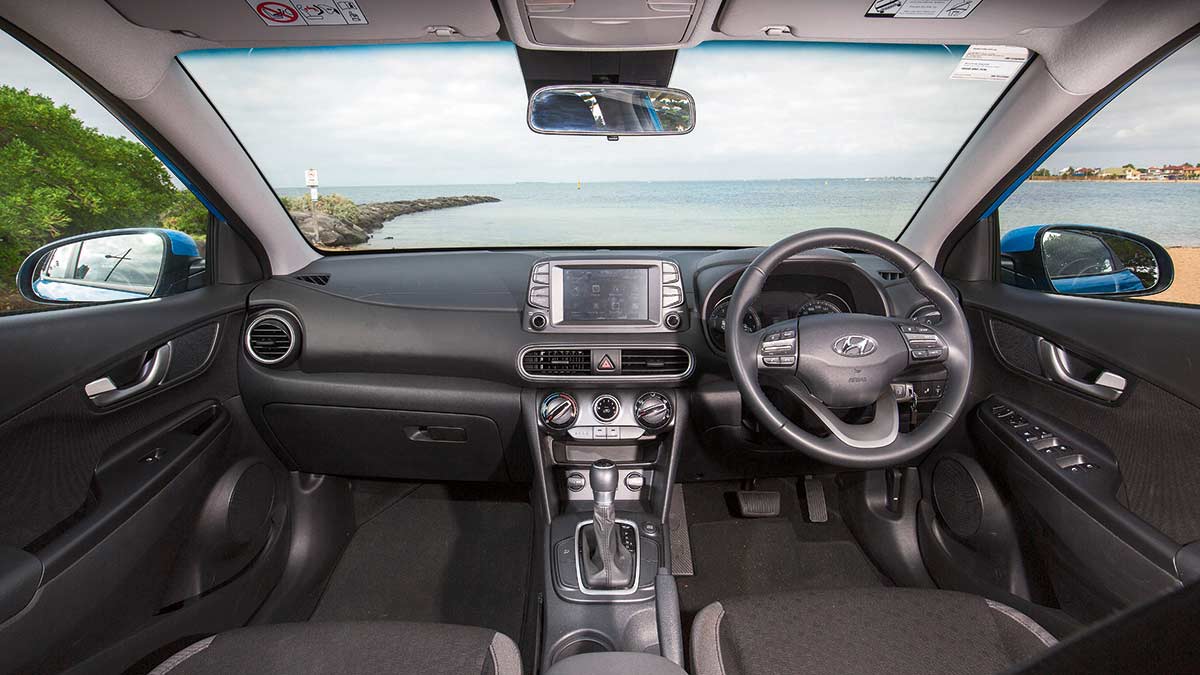The ninth-generation Toyota HiLux has arrived, bringing with it a futuristic forward exterior design, more safety and tech and the same rugged capability owners love. Will the updates tempt private buyers away from the Ford Ranger or are they just enough to keep fleets onside?
Mitsubishi ASX v Hyundai Kona
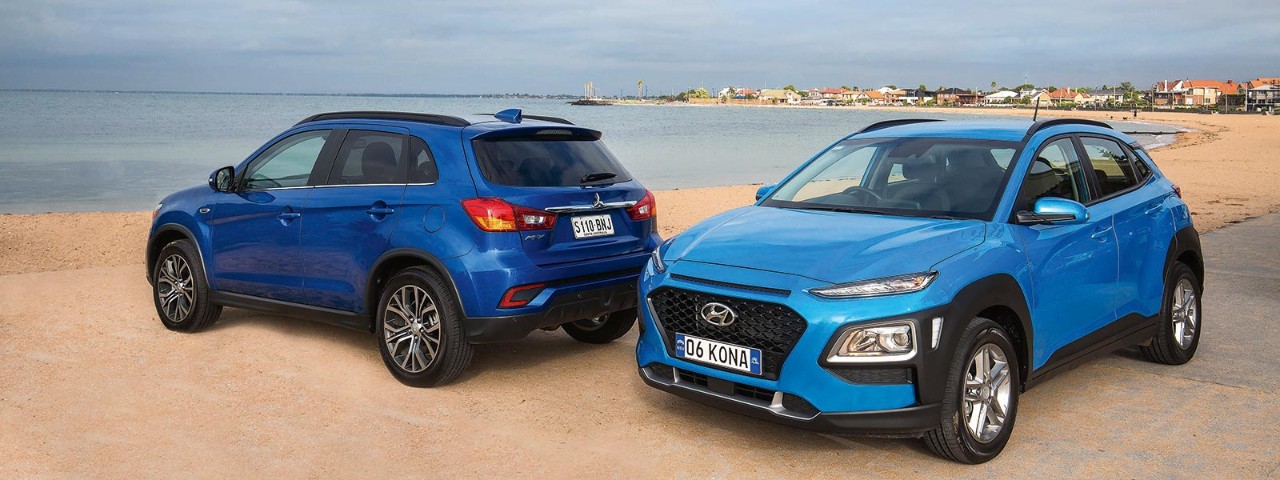
RACV pits Mitsubishi's popular small SUV against Hyundai's newcomer.
SUVs are evolving at a rapid pace, with makers constantly bringing out fresh models to satisfy a buyer hunger that shows little sign of abating.
So will a well-established player such as Mitsubishi ASX, which ended 2017 as the best-selling SUV in the country, still be able to cut it against the latest offerings, especially when it’s an in-your-face model like Hyundai’s all-new Kona?
The ASX, which arrived here in 2010, is a real stayer. Starting from a solid foundation, it has continued to evolve thanks to a variety of updates and shuffling of the line-up along the way. But while Mitsubishi’s smallest SUV still looks reasonably smart, it’s starting to show its age, and its bodylines certainly aren’t as bold as some recent arrivals.
Mitsubishi ASX XLS
Price: $32,000 + $2990 ORC (special offer)
Engine: 2.0-litre petrol
Safety: 7 airbags, AEB, lane-departure warning
Economy: 9.2L/100km
Value: ✩✩✩ 1/2
Hyundai Kona Active
Price: $26,000 + $3707 ORC
Engine: 2.0-litre petrol
Safety: 6 airbags, AEB, lane-departure/keep, blind-spot, cross-traffic and driver-attention warnings
Economy: 7.7L/100km
Value: ✩✩✩✩
Enter the extrovert
Kona’s extroverted styling stands out from the crowd with its curvy lines, vivid colour palette and two-tone roof option all designed to create a youthful image. While this is a big part of the appeal, it can polarise opinion.
Both ASX and Kona come in front-wheel-drive and all-wheel-drive form. The ASX, which had a substantial update in late 2017, is priced at $25,000 to $37,500 plus on-road costs for the five-variant line-up, which includes two equipment grades (LS and XLS), 2.0-litre petrol and 2.2-litre diesel engine options, and six-speed manual (petrol base model only) or CVT transmissions. Lower ASX on-road costs currently sweeten the deal.
There’s no diesel Kona but Hyundai does have two petrol-engine options in each of the three equipment grades, Active, Elite and Highlander. The base configuration is a front-wheel-drive, 2.0-litre naturally aspirated engine with a conventional six-speed auto, and there’s also a stronger-performing all-wheel-drive model with a 1.6-litre turbo-petrol engine backed by a seven-speed dual-clutch automatic. With both configurations offered across the range, and a Safety Pack option for the base Active models, Kona is available in eight variants, from $24,500 to $36,000 plus on-road costs.
What we compared
Mitsubishi supplied us with a high-spec XLS 2WD version ($32,000) and Hyundai gave us the base-model Active ($24,500) fitted with the $1500 Safety Pack. ASX gets a similar option on the base-grade LS, called the LS ADAS model, and while optioning these additional safety features is money well spent, it would have been preferable if they were standard across the range.
This small SUV category is all about driving ease and functionality, focusing on city and suburban use with the occasional country trip, and that’s where our test cars’ strengths lie, although they approach the task slightly differently.
Similar mechanics
Mechanically, they follow a similar formula: a 2.0-litre naturally aspirated petrol engine, automatic transmission and front-wheel drive.
The main difference was equipment levels, with additional comfort and convenience features in our high-end ASX including heated front seats, power adjustment on the driver’s seat, smart key/push-button start and rain-sensing wipers. These features are on higher-spec Konas. Both vehicles rely on your mobile phone data for their sat-nav operation via Apple CarPlay or Android Auto.
On the inside
ASX is one of the bigger-bodied and roomier wagons in the category, and parked side by side Kona is noticeably smaller, but Hyundai has made good use of the interior space. Neither has anything other than adequate width and leg room across the back seat, with ASX’s marginally better. The typical SUV high, upright seating position is more pronounced in the ASX, making its all-round visibility fractionally better, but it loses out to Kona on head room, which was not helped by the sunroof in our ASX. The biggest space difference is the ASX’s much larger luggage compartment, even though the Kona’s is by no means small for the class.
Kona’s newer cabin design has a fresh, welcoming feel, with a straightforward presentation and clear, logically placed controls. For a base model, front seats are well shaped, supportive and very comfortable.
On the road
Mechanically, ASX is a well-proven package with an excellent reputation for reliability, and even though it does its job without much fuss it lacks the refinement of the Kona and its performance does not have much in reserve. There is also a coarseness in the ASX’s CVT operation that you don’t find in new-generation transmissions, such as the one in Mitsubishi’s recently launched Eclipse Cross.
While Kona’s later technology gives it a smoother, more efficient manner – and acceleration that’s a second quicker than the ASX from 0-100kmh – it lacks the strong pull of the 1.6-litre turbo engine in the all-wheel-drive version. Kona drivers can select from three drive modes, and operating mainly in Normal mode, our Kona averaged a pleasing 7.7L/100km, against the ASX’s 9.2L/100km overall.
Hyundai has tuned the steering and suspension to suit Australian roads and the sort of use this type of vehicle is likely to encounter, giving the Kona an edge in handling and ride over the ASX, as well as many other standard models in the class. The all-wheel-drive Kona raises the bar with a more sophisticated multi-link rear-suspension set-up and bigger brakes. Coarse bitumen generates some tyre and road noise, and a background of operating noise when the engine is worked hard becomes noticeable in what is otherwise a relatively quiet cabin.
Buyers get the reassurance of a five-year/unlimited-kilometre warranty with both brands.
|
Price |
$32,000 + $2990 ORC (special offer) Metal paint: $590 Model range: $25,000-$37,500 |
$26,000 (incl. $1500 Safety Pack) + $3707 (est) ORC Metal paint: $595 Model range: $24,500-$36,000 |
|---|---|---|
|
Safety |
ESC, ABS, 7 airbags, autonomous emergency braking, lane-departure warning, reversing camera, rear parking sensors, auto lights/wipers and ISOFIX child seating. |
ESC, ABS, 6 airbags, autonomous emergency braking, lane-keep/departure, driver-attention, blind-spot and rear cross-traffic alerts. Reversing camera/park sensors, auto lights, tyre-pressure monitor and ISOFIX child seating. |
|
Connectivity |
7” touch-screen, Apple CarPlay and Android Auto, digital/AM/FM radio and a USB port. |
7” touch-screen, Apple CarPlay and Android Auto, AM/FM radio, bluetooth and USB/AUX input. |
|
Vehicle features |
Climate control, leather seat facings, heated front seats, roof rails and a sunroof. |
Manual air-conditioning, cloth seats and roof rails. |
|
Driver features |
Powered seat, keyless entry/start, electric folding mirrors and fully adjustable steering. |
Keyless entry, three drive modes, electric folding mirrors and fully adjustable steering. |
|
Specifications |
Drivetrain: 1998cc 4cyl petrol engine, 110kW@6000rpm, 197Nm@4200rpm, front-wheel drive and CVT |
Drivetrain: 1999cc 4cyl petrol engine, 110kW@6200rpm, 180Nm@4500rpm, front-wheel drive and 6spd auto |
|
Service/repairs |
12-month/15,000 kilometre capped-price services, five year/unlimited kilometre warranty |
12-month/15,000 kilometre capped-price services, five year/unlimited kilometre warranty |
|
Category ratings |
Pricing: ✩✩✩ 1/2 |
Pricing: ✩✩✩✩ |
